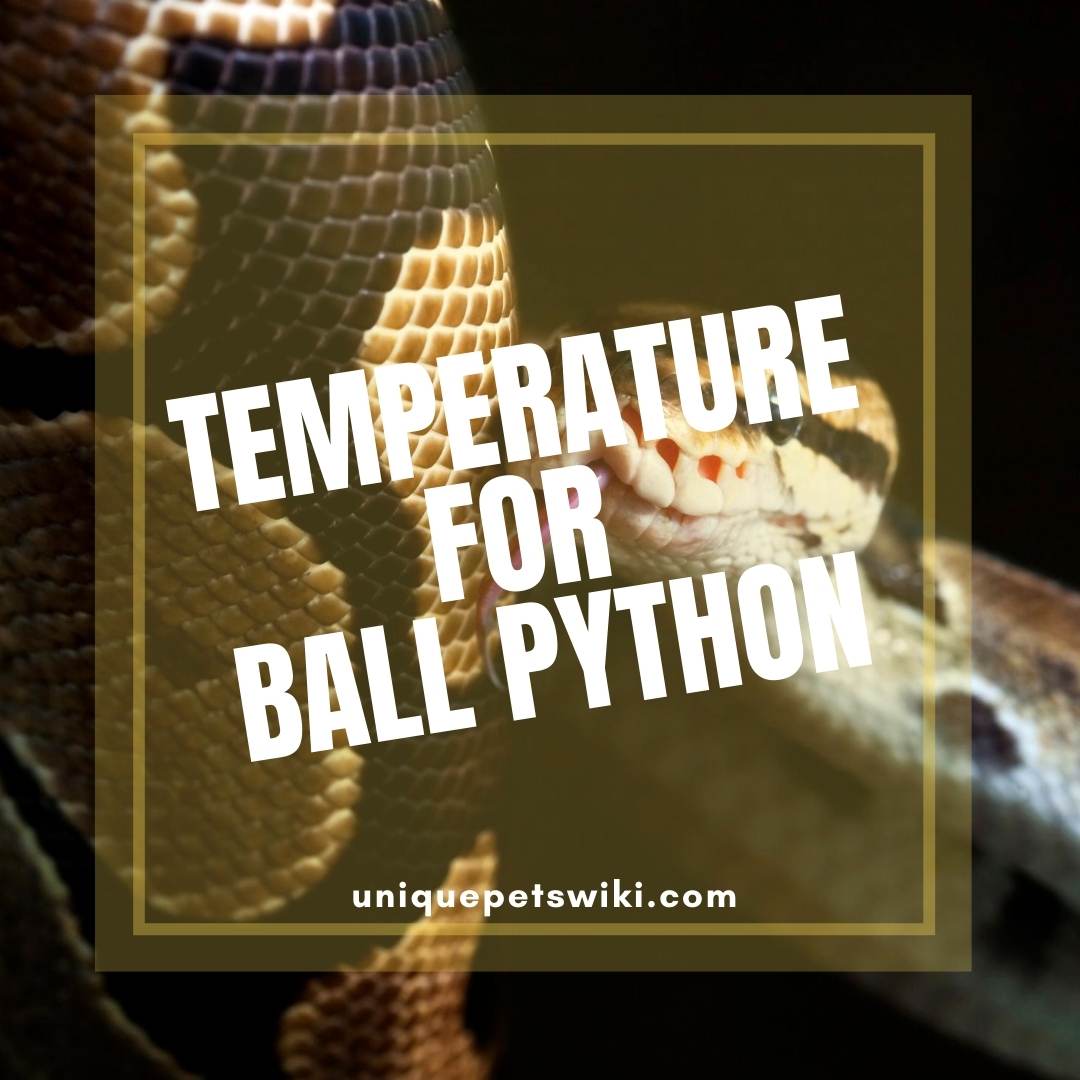Ball pythons are cold-blooded animals that require the ambient temperature to regulate their metabolisms. Thus, it is important to provide adequate temperatures for them to function well. We will discuss more about the temperatures for ball python in this article.
Most people do not understand the best temperature for a ball python. Thus, we came up with this article to guide you on how you can provide your ball python with adequate heat.
Keep reading to learn more.
This article has been reviewed by Dr. Gospel. Read more about our knowledge control process here.
Contents
Understand Temperature for Ball Pythons to Successfully Create Ball Python Habitat
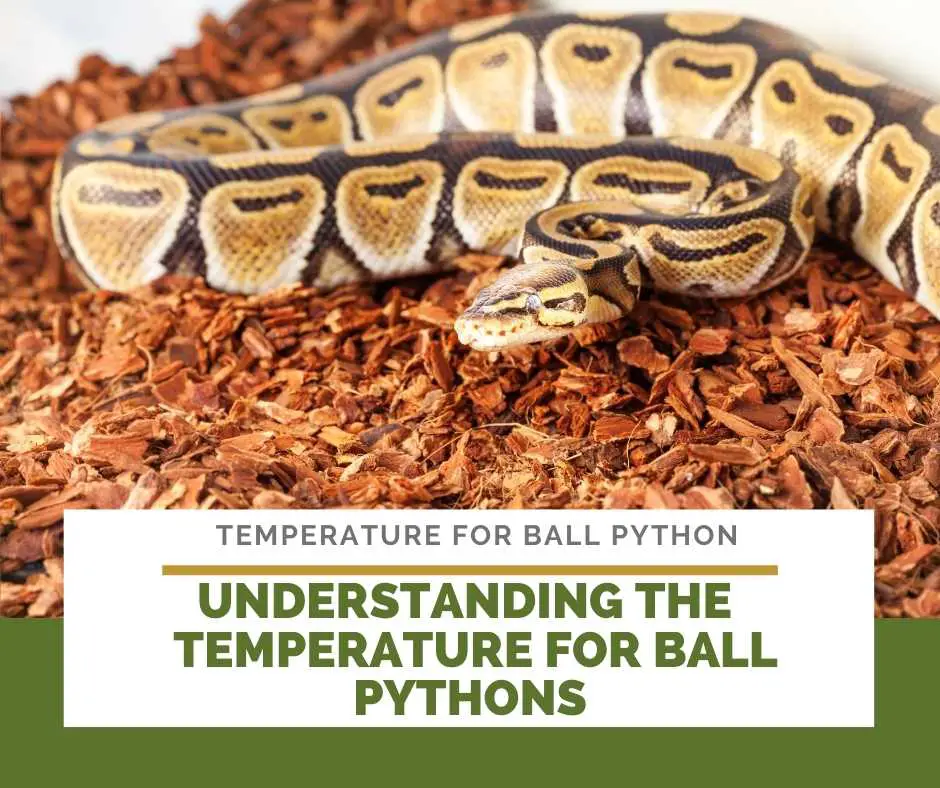
To provide adequate temperature for ball pythons, you need to understand how much heat is sufficient.
Ball pythons are natives to the tropical Savanna climate in Africa. Thus, it is important to provide a similar habitat for them to thrive in captivity.
In their natural habitat, the temperature ranges 75 degrees Fahrenheit to 80 degrees Fahrenheit on the cool side and 80 degrees Fahrenheit to 85 degrees Fahrenheit on the warm side., and occasionally rises to 960F. However, ball pythons prefer areas where the temperatures are stable and more cooling. Thus, you are more likely to find ball pythons in burrow areas rather thsan open airs.
To make ball python’s temperature similar to their habitats, it is critical to provide a thermo gradient habitat.
A thermo gradient habitat must include:
- Basking surface — 88°F – 92°F (31-33°C)
- Ambient — 82°F – 89°F (28-32°C)
- Cool hide — 76°F – 82°F (26°C)
- Nighttime — 72°F- 82°F (22-26°F)
Basking Surface
Even though ball pythons prefer to live in burrows, they sometimes come out in the sun to bask. Thus, it is essential to provide the basking spot for your ball python. The best temperature for the basking surface should range from 88 – 92 degrees Fahrenheit and should be the only side heated up if necessary.
The basking spot for ball pythons is important for helping them to warm their bodies. The surface temperature is different from the ambient temperature. The surface temperature can get hot, but you should ensure that it does not exceed 950F.
To measure the surface temperature in a ball python cage, you can use an infrared temperature gun.
Ambient Temperature
Ambient temperature refers to the air temperature. The ambient temperature is usually cooler than the basking surface. Thus, to measure the ambient temperature, you need to use a different thermometer, such as a conventional digital thermometer.
You should ensure that the ambient temperature in a ball python cage does not exceed 950F and should not dip below 75 degrees Fahrenheit.
Cool Hide
When the ball python is hot enough, it will need to cool off its body. Thus, it is necessary to include a cool hide for your ball python. The best temperature for the cool hide in a ball python cage should range between 76-820F.
Nighttime
At night, you can put off the heating lamp to let the temperature drop. Low temperature during the night has no adverse effect on ball pythons. Instead, they are beneficial for ball python’s health and also reduce your electricity bill.
However, if it is excessively cold during the winter or your house, you can leave the heating bulb on. The best temperature for ball pythons during the nighttime is ranges between 720F – 820F.
Why Ball Pythons Need Different Temperatures
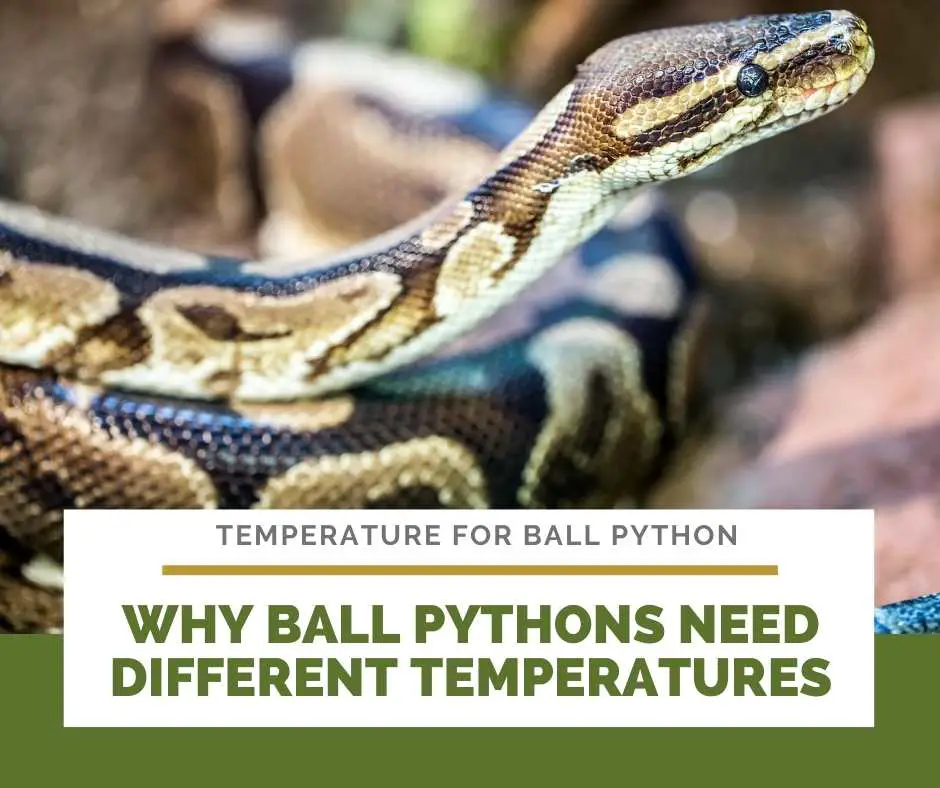
Since ball pythons are cold-blooded animals, they need different temperatures to regulate their bodies.
When they are cold, they will move to warm grounds to heat their bodies and vice versa. Too much cold can kill your ball python, and thus it is critical to provide adequate temperature for them.
Unlike other snakes, ball pythons don’t bask in the sun to warm their body. Instead, they prefer warm surfaces to warm their bellies.
In the wild, ball pythons spend most of their day hiding and only rely on warm grounds to warm their bodies. Thus, it is critical to include an under tank heater to match their natural habitat.
How to Maintain Temperature in the Ball Python Cage?
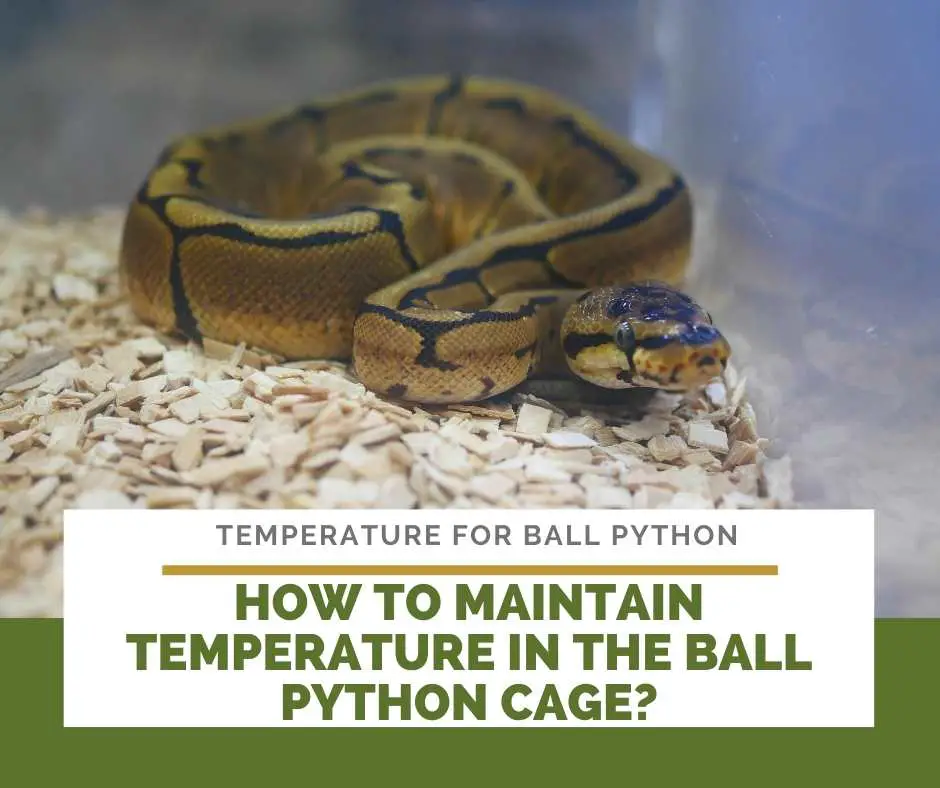
Low temperatures in ball python’s cage can cause health issues to them. Thus it is important to maintain a suitable temperature for captivity ball pythons.
There are many ways in which you can maintain the temperature in a ball python’s cage. These include:
Using a Basking Spot
To provide adequate temperatures for ball python, a basking spot for ball pythons is the warm side of their tank that they move to when they want to warm their bodies.
The basking spot is a significant part of your ball python’s cage setup. To provide a basking spot for ball pythons, you can use a heat bulb that can cover at least 2/3 of its cage.
Since ball pythons are nocturnal animals, they are more active at night. Thus, they do not need light at night.
Putting off the light at night is critical for stimulating their day/night cycle, and preventing your ball python from getting stressed. The best temperature for basking spot is 88 – 92 degrees Fahrenheit.
Using a Heater
Most pet owners prefer to use under tank pads to warm the ball python’s cage. Even so, it’s challenging to maintain adequate heating utilizing a heater.
Therefore, you should ensure that you use a thermometer on each side of the ball python to maintain the adequate temperatures.
There are several heaters that you can use in a ball python’s cage. They include
Heat lamp
Heat lamps are more effective as they offer your ball python with a natural day/night cycle. Those heat lamps come in different wattages. The best wattage to use on your ball python’s cage depends on its size.
Thus, if your ball python’s tank is large, you should consider including a heating lamp with a high wattage.
For instance, a bulb that has 150Watts is too hot for a 10 gallons tank. And, it would provide excessive heat for the ball python.
Radiant Heat Panels
For radiant heat panels to work correctly, you should use them together with a thermostat or rheostat. You should install a thermostat under the heat lamp to regulate the temperature.
RHPs work the same as ceramic heaters. Unlike the ceramic heaters, Radiant heat panels do not overheat the surface of the cage. Thus, they are more effective than ceramic heaters.
Just like the heat lamp, the panel’s wattage depends on the size of the tank. Thus, you should go for higher wattage panels if your ball python’s cage is large.
Heat Tape
Heat tapes are designed to provide warmth in reptile cages. For them to work effectively, you should use them together with a thermostat.
A heating tape without a thermostat can overheat your ball python’s cage causing it more harm than good. Therefore, it is critical to invest in the right thermostat before installing a heat tape in your ball python’s cage.
Additionally, the heat tape should cover only 1/3 of the ball python’s cage to provide a thermal gradient temperature. It will help your ball python regularly move from the warm side to the cold side when they need to.
Heat Pad
The heat pad is another source of heat in the ball python’s cage. To heat the ball python’s cage, you should insert the heat pad underneath and then plug it in. The heat pad provides belly heat for ball pythons.
When using heating pads, mats or tapes, ensure to check carefully your snake’s belly for signs of redness.
A Cool Hide is a Must
As much as ball pythons require heat to keep their bodies warm, they also need to cool off their bodies when the weather is overly hot.
It is therefore important to include a cool hide for ball pythons where they can move when they need to cool off.
Do Ball Pythons Need to a Night Light to Maintain the Temperature
Ball pythons do not require light at night to maintain temperature. They are nocturnal animals and therefore do not necessarily require light at night. Even without lights at night, the ball python is quite active.
They also thrive on cold nights. Thus, it is okay to let the temperature go down during the night. The ideal temperature for ball python during the night is 720F – 820F.
However, if the temperature is below 720F, you can include a heater to keep your lovely reptile warmed up.
Vet comment
One of the most important aspects of homing a ball python is the enclosure!
The nature and temperature of your ball python’s enclosure can greatly impact the overall health and well-being of your ball python.
Being that these species thrive in warm and moist areas, providing a heat gradient ranging from 88 – 92 degrees Fahrenheit for basking spots and 76 – 80 degrees Fahrenheit on the cool side would ensure thermoregulation as it would have been in the wild!
Wrapping Up
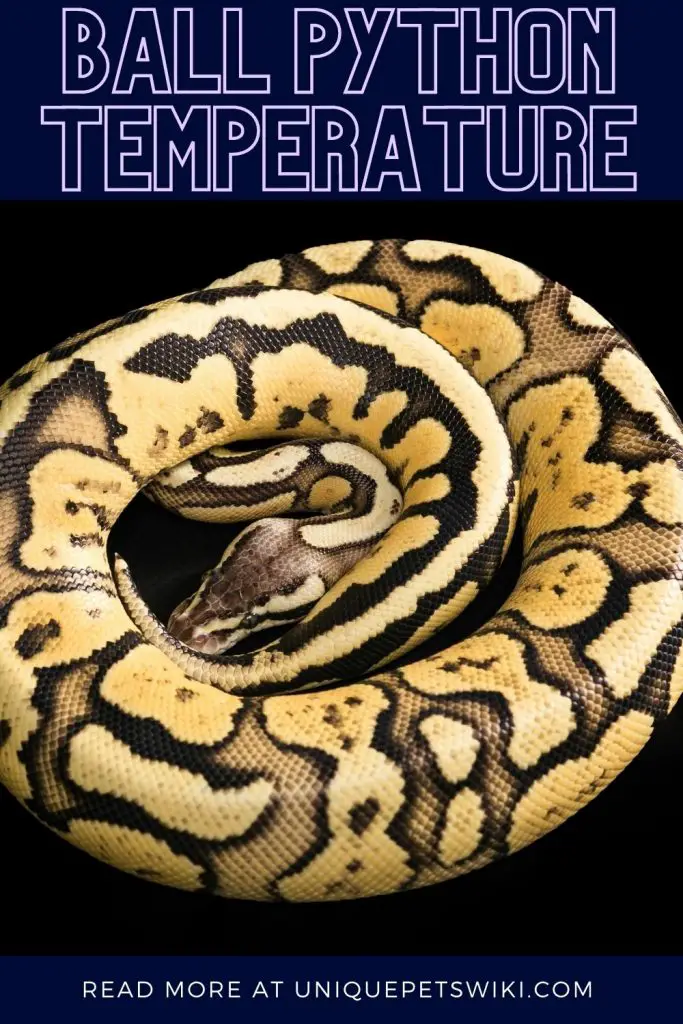
It is critical to provide adequate temperatures for ball python. Whichever method you prefer to use to heat their cage, it is essential to remember that ball pythons prefer a warm surface to warm their bellies rather than bask in the sun.
Even so, it’s natural that the sun comes from above, and snakes tend to go underground to cool off their bodies. Thus, heat lamps are better than underground heaters as they promote natural behaviors in ball pythons.
